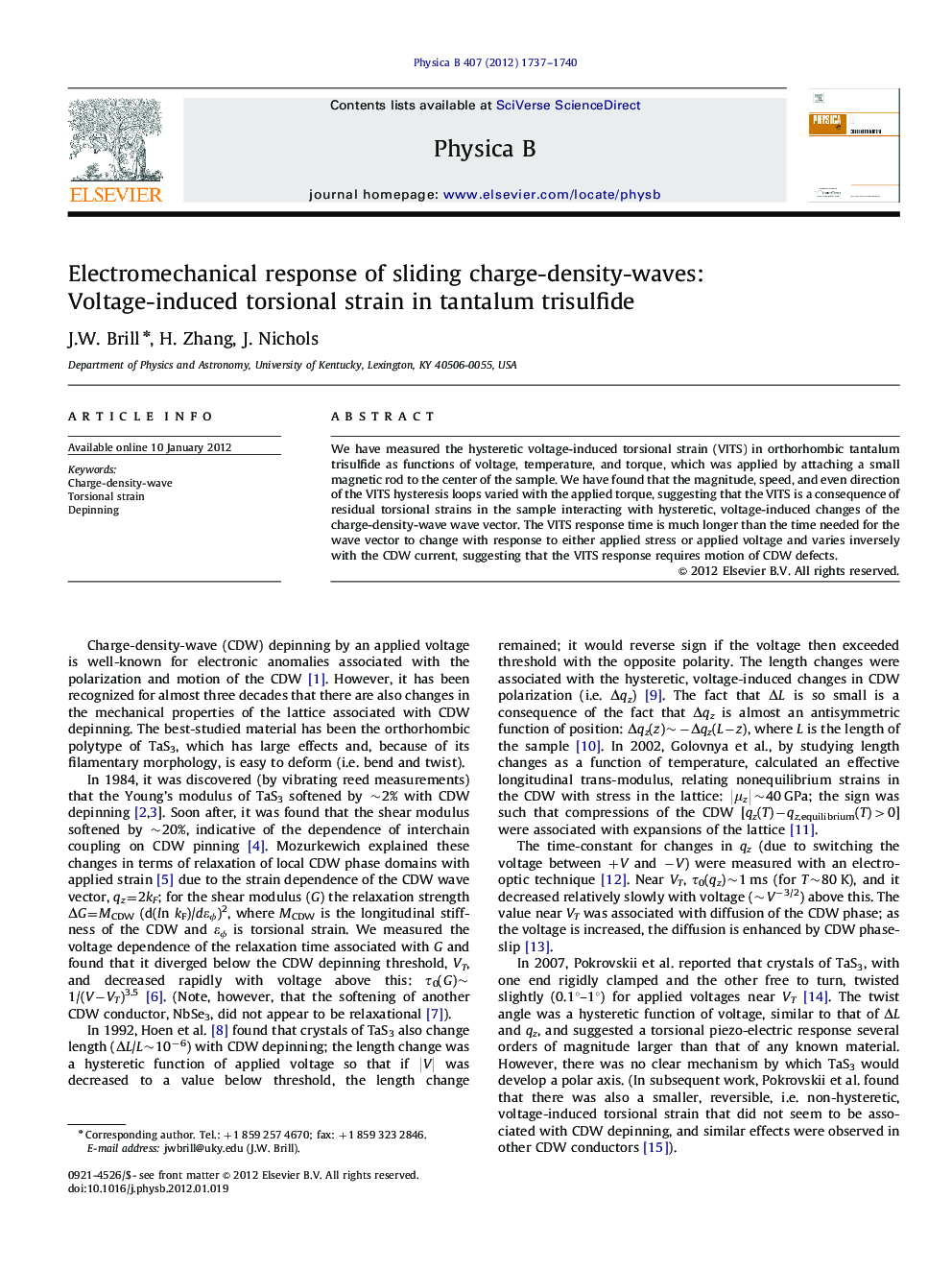| Article ID | Journal | Published Year | Pages | File Type |
|---|---|---|---|---|
| 1810890 | Physica B: Condensed Matter | 2012 | 4 Pages |
Abstract
We have measured the hysteretic voltage-induced torsional strain (VITS) in orthorhombic tantalum trisulfide as functions of voltage, temperature, and torque, which was applied by attaching a small magnetic rod to the center of the sample. We have found that the magnitude, speed, and even direction of the VITS hysteresis loops varied with the applied torque, suggesting that the VITS is a consequence of residual torsional strains in the sample interacting with hysteretic, voltage-induced changes of the charge-density-wave wave vector. The VITS response time is much longer than the time needed for the wave vector to change with response to either applied stress or applied voltage and varies inversely with the CDW current, suggesting that the VITS response requires motion of CDW defects.
Related Topics
Physical Sciences and Engineering
Physics and Astronomy
Condensed Matter Physics
Authors
J.W. Brill, H. Zhang, J. Nichols,
